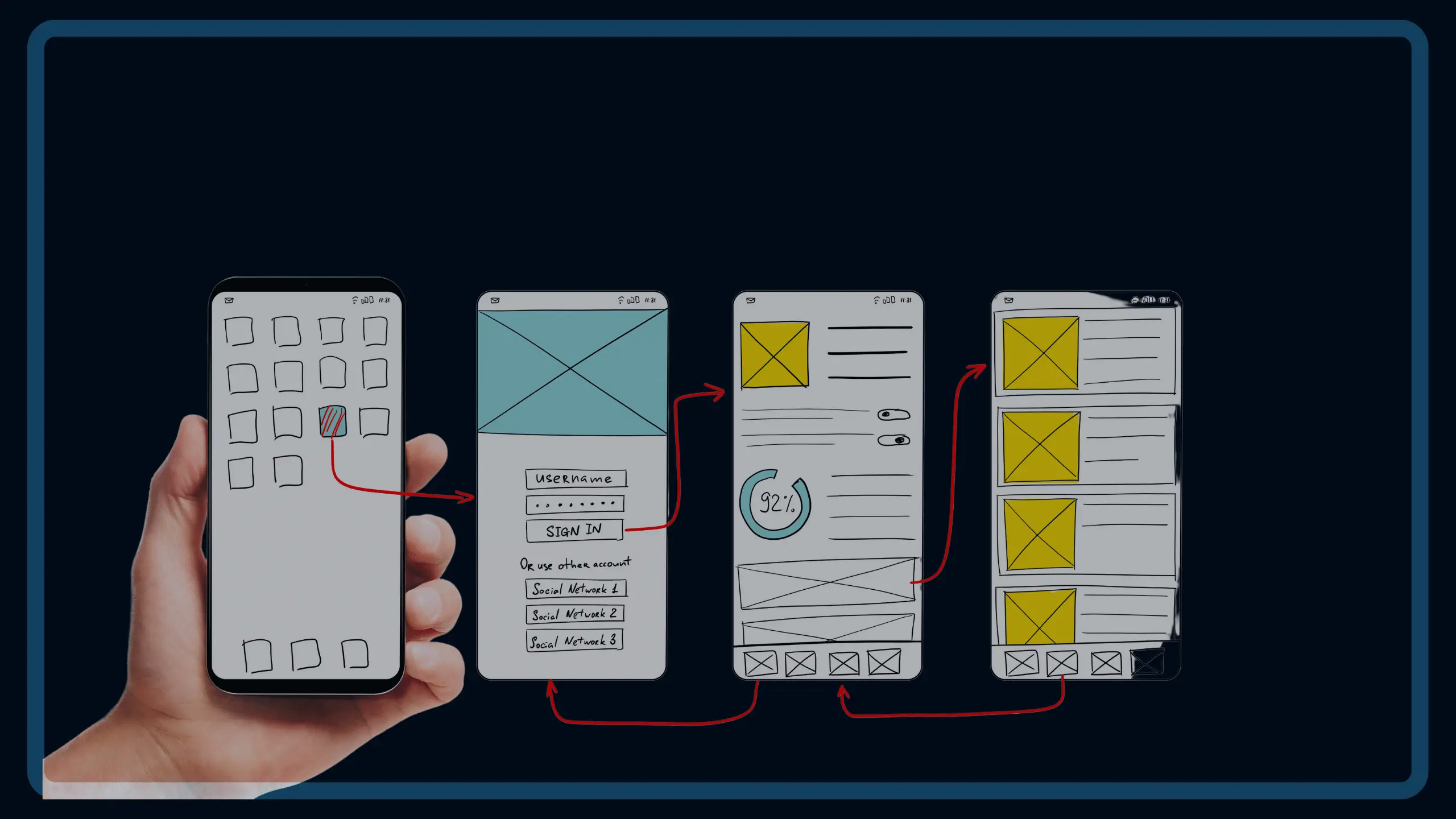Overview
The mobile app development process is a multi-step effort. It is a process of building a software application for handheld devices, including smartphones and tablets.
There are two main types of apps: native and web-based. Native apps are programs written specifically for an operating system (OS). Still, they’re not as fast or stable as native apps because they don’t use OS-specific features like push notifications or camera integration.
In contrast, web-based apps use HTML5 code that’s run in a browser which a user can access through any device with internet access.
The benefits of having a well-developed app include increased brand awareness, improved customer satisfaction rates due to better functionality than competitors’ products/services, higher conversion rates due to more straightforward navigation between pages within your product catalogue etc.
In a nutshell, the essential steps to develop a mobile app are:
- Planning,
- Design,
- Development,
- Testing,
- Deployment,
- Marketing,
- Maintenance
Let’s examine the steps involved in the mobile app development process (and remember to read our bonus tips for success).
Planning
Planning is essential to a successful mobile app development process. It’s also one of the most critical, as it sets the foundation for everything that comes after it.
First, you must identify your target audience and fully understand its wants and needs. This will help you create an effective strategy for reaching them with your product or service via mobile devices.
Next, define what goals and objectives you want to achieve with this new app–what problem does it solve? How does it improve users’ lives? What value does it provide them?
Finally, plan out the features and functions of this new product (or update). These include user interface design elements like buttons or menus; software components such as databases; hardware requirements such as cameras or sensors; etcetera.
Design
The design process is the most critical part of your app’s development. It’s where you create the user interface (UI) and develop the user experience (UX). The UI is what users see, while UX refers to how they interact.
When designing an app, the designers must consider many elements: colour scheme, fonts and text size, icons and images–the list goes on! Suppose any of the tasks mentioned earlier are not carried out accurately from the start. In that case, it could give rise to problems during testing or post-launch when users employ the product in a manner that the developers could have foreseen. These issues can lead to avoidable delays and cost overruns.
Development
The development process is the most crucial part of your app. It’s where you build and program the features that will make your product unique, and it’s also where you test those features to ensure they work correctly.
The development process involves choosing a platform, making detailed coding specifications and writing the actual code. The development process is long, and it can be challenging to stay on track. If you’re working with an agency or freelancer, this is where they’ll make sure everything goes as planned and that your product meets its goals.
Testing/Beta Testing
Before launching an app, it must be rigorously tested to ensure it works as intended. Testing is done to identify any errors or bugs within the app and ensure it functions smoothly across all devices and operating systems. This is where testing and QA come in as essential steps in the mobile app development cycle.
Beta testing is where you release the app to a small group of users for feedback and use it to make any necessary changes or improvements before releasing it to the general public. Testing can be done in-house or by a reputable testing company. The latter is often preferred because they have more resources and expertise in testing.
During testing, looking for issues such as crashes, slow loading times, bugs, and other user experience problems is essential. The app should also be tested on different devices and operating systems to ensure it works consistently across all platforms.
Once testing is complete, the project manager ensures that the developers have addressed all the identified issues before launch. This ensures that users have a positive experience with the app and are more likely to use it again.
Deployment
Deployment is the process of submitting your app to the app stores. It is also known as “publishing” or “launching” your product. In this stage, you’ll need to ensure that all of the required information is filled out correctly to be approved by Apple or Google Play store staff.
The next step after deployment would be setting up analytics so that you can track how users are interacting with your app and understand their behaviour patterns better so that they can be improved upon in future updates or new releases of the same product line.
Marketing
After deployment, you must ensure people know about the app.
One way to do this is to spread the word via social media and traditional advertising.
Another way to spread the word is by creating a blog post or video describing your app’s purpose and why people should download it. You can then share that content on social media channels like Facebook and Twitter, which will help drive traffic to your app’s page within the app store.
Or you also can take help from S2S Marketing , One of the best marketing company in Pakistan
Maintenance
Maintenance is monitoring user feedback, fixing bugs or glitches, and updating the app with new features.
It can be done at any time during the development process but is most often done after you’ve launched your app. For example, suppose you’re working on a fitness app that helps users track their workouts and food intake. In that case, you may add more exercises or recipes as people start using it–or perhaps you’ll find that some things need to be changed based on user feedback.
This is also an opportunity for you as a developer or team member to check in with yourself: Are there any changes that need to be made? Are there improvements we could make based on how people use our product?
Costs
There are two main costs to consider when developing a mobile app:
- Development costs. You’ll need this money for your developer(s) and designers to build your app. This can vary depending on your app’s complexity, but it’s generally between $5k-$10k per month.
- Maintenance costs. Once you have an app live in the App Store or Google Play store, ongoing maintenance fees will be associated with keeping it up-to-date with new features and bug fixes as necessary (known as “support”). These can range anywhere from $1k-$3k per month, depending on what level of service you want from the company- from basic troubleshooting to full-on custom development work if needed!
Wrapping Up
In conclusion, the process of developing a mobile app can be a complex and intricate one.
Each step demands meticulous attention to detail, from designing the user interface to deploying it on various platforms. Testing the app thoroughly and providing support after deployment is equally crucial for the success of the mobile app.
By following these steps diligently, you can ensure the creation of a high-quality mobile app that meets the needs and expectations of the end users.
Bonus – Tips for Success
The mobile app development process can be a complicated one. Still, you can create an effective app that meets your needs with the right tools and knowledge. Here are some tips for success:
- Hire experienced professionals. If you want help developing your mobile app, ensure that the person or company you hire has experience working on similar projects. This will ensure they know what they’re doing and can deliver quality work on time (or earlier).
- Take advantage of app store optimization (ASO). ASO refers to strategies developers use to increase their apps’ visibility in search results so more people will find them when searching for specific keywords or phrases related to their products/services/content offerings within specific categories like “games” or “business apps.” This is especially important if there are already thousands upon thousands of competitors vying for top spots within each category, even more so if those competitors have been around longer than yours!


